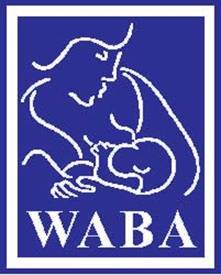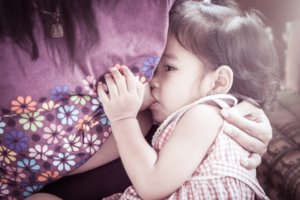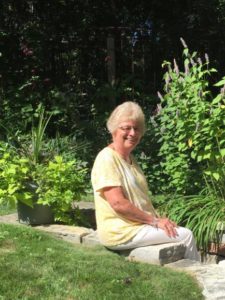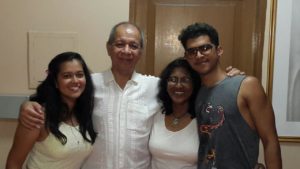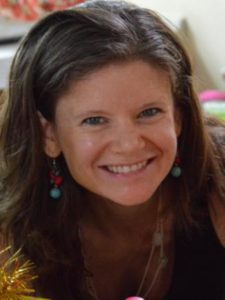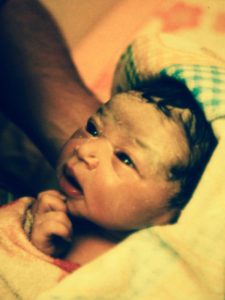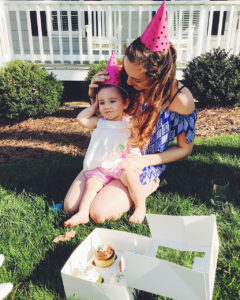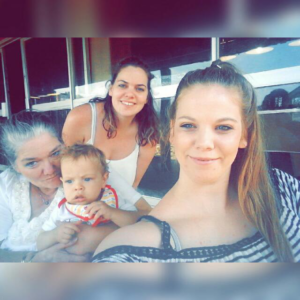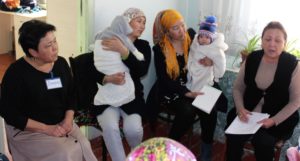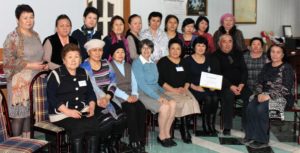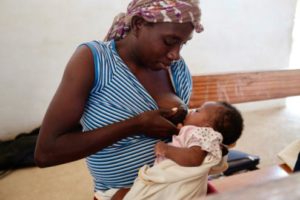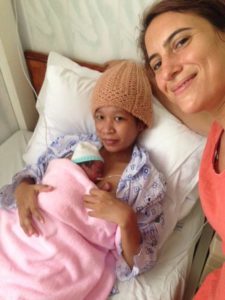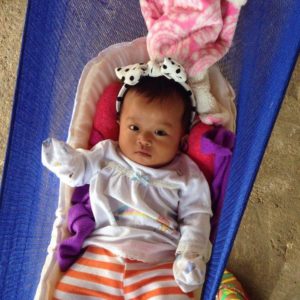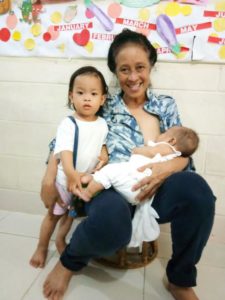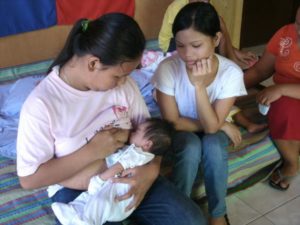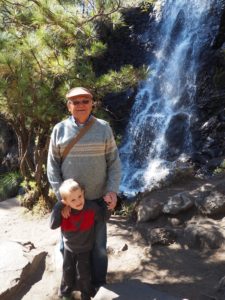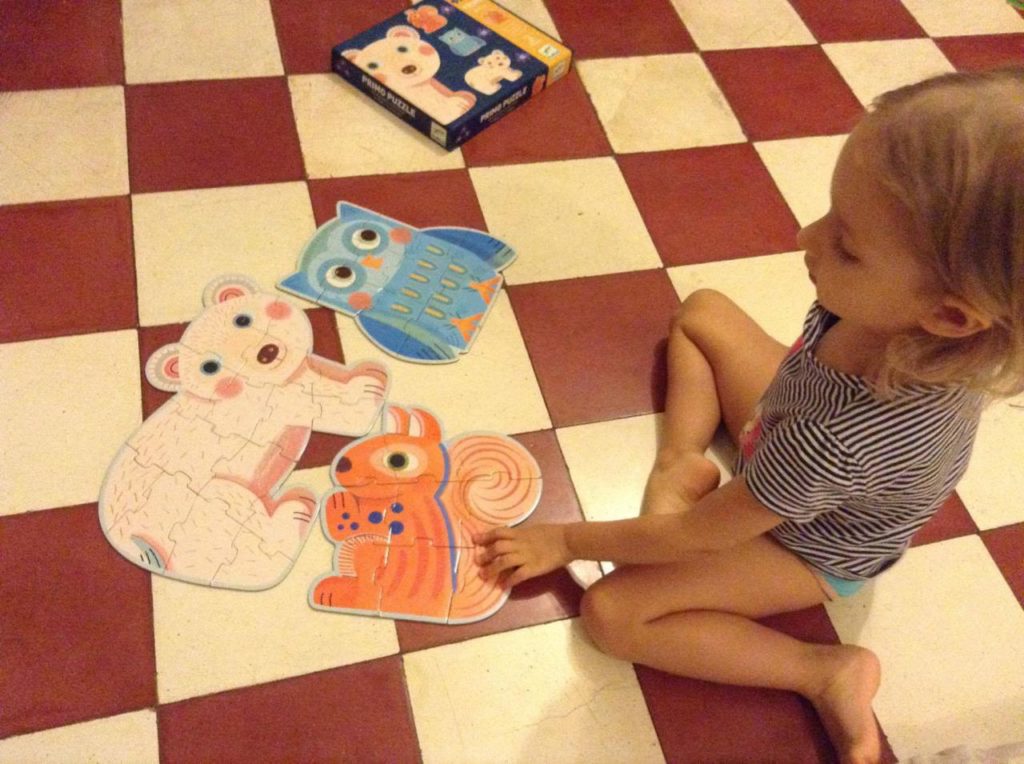Working TOGETHER Creating PARTNERSHIPS
“Many barriers exist for mothers who want to breastfeed. They shouldn’t have to go it alone. Whether you’re a clinician, a family member, a friend, or an employer, you can play an important part in helping mothers who want to breastfeed.” US Surgeon General Regina M. Benjamin (2011)
The theme of the Breastfeeding Mother Support E-Newsletter, Vol 15, No 1, is Working TOGETHER Creating PARTNERSHIPS. Mothers around the world face many factors that interfere in the success of their breastfeeding journey— a lack of support from family members, misinformation from their health care team, being sidelined for breastfeeding in public, or for requesting to express milk while at work— to name a few. But what happens when you turn these factors around and mothers are surrounded by supportive family members, midwives who understand breastfeeding as the first connection between mother and baby, businesses that openly display their support for breastfeeding in public, breastfeeding counselors who reach out to mothers to breastfeed even in the harshest of environments, and children whose worlds are tightly woven with breastfeeding? In this issue we share some of these success stories from mothers around the world and the support that is being built around them to ensure a rewarding breastfeeding journey. We hope this fuels your passion, your energy, your commitment to keep working towards normalizing breastfeeding.
Editors Letter
Working TOGETHER Creating PARTNERSHIPS spotlight: Midwives
Mother’s Voices: The essence of breastfeeding support
- Breastfeeding from the Start, Emma Fitch Harrison (USA)
- I Did not Trust my Body, Alexandra Romo (Ecuador)
- How my Support System has Helped me Stay Committed to Breastfeeding, Amanda Lauder (South Africa)
- Breastfeeding Latina Mother Looking for Support, Luisa Colón (USA)
Best Practices: Mother support from around the globe
- Establishing Mother Support Groups in the Kyrgyz Republic, Maryanne Stone-Jimenez
- New Home Visit Program Launched in Hinche!, Midwives for Haiti
- Seav Mey: Miraculous Baby of Cambodia, Selen Göbelez Dumas
- Breastfeeding: How One Group fought the Spread of Formula Milk in Refugee Camps [in Greece], Nurture Project International
Family Matters: A mother’s primary support network
- Yes! Grandmas can Breastfeed, Ines Avellana-Fernandez (Philippines)
- Breastfeeding Support: The Role of a Grandfather, Christopher Smith (Mexico)
- Becoming a Father in Cambodia, Alex Hales (Cambodia)
Changemakers: Dreamers, doers and innovators normalizing breastfeeding
Children’s Corner
- Mother Support, Kalpana (USA)
- Breastfeeding is a Part of Playtime, Lucia (Cambodia)
- Humans are Mammals too, Katherine (USA)
Honoring Breastfeeding Advocates
Stay Current
We Welcome your Submissions
The Breastfeeding Mother Support E-Newsletter is published twice a year by the World Alliance for Breastfeeding Action (WABA) to promote an environment of awareness and support for all mothers to initiate and sustain breastfeeding. It includes stories, new information relevant to the promotion and support of breastfeeding, and highlights efforts across the world by organizations, health workers, businesses, communities, etc. in supporting the breastfeeding mother. The newsletter helps all of us who work in breastfeeding to feel supported and appreciated in what we do and to improve how we help mothers, fathers, families and communities in breastfeeding.
We welcome your suggestions or submissions which may be any actions taken, specific work done, investigations and projects carried out from different perspectives and from different parts of the world that have provided support to women in their role as breastfeeding mothers. Submissions should be between 250 and 500 words, and should include a title and a short biography of the corresponding author (2 to 3 sentences). Please be specific in including details where relevant such as name of places, persons, and exact dates. Photos illustrating a subject specific to your submission also are welcome. Please send to gims_gifs@yahoo.com.
We reserve the right to edit every submission for spelling, grammar and clarity of content.
Please share this newsletter with your friends and colleagues. To subscribe, please email gims_gifs@yahoo.com and specify language preference (English, Spanish, French or Portuguese).
The opinions and information expressed in the articles of this issue do not necessarily reflect the views and policies of WABA, the Mother Support Working Group nor the Newsletter Editors. For further information or topic discussion, please contact the authors directly.
Goodbye and Hello
Pushpa Panadam and Rebecca Magalhães
Goodbye…
Fourteen years—for some readers, this may seem like a long time and for others, just a blip on the timeline. Nevertheless, regardless of how it is viewed, that is how long this e-Newsletter has been in existence. It was an idea of the World Alliance for Breastfeeding Action (WABA) Secretariat, proposed to the WABA Mother Support Task Force as an activity for the Task Force to implement. After discussion by all involved, the idea was accepted and put into action. Now, fourteen years later, the Newsletter Co-Editors, Pushpa and Rebecca, have come to the joint conclusion that it is time to hand the editorship over–time to say GOODBYE! These 14 years have been extremely rewarding! Together, although living thousands of miles apart, but thanks to technology, we have gone through the process of creating, reviewing, and finalizing each issue… 37 issues total! It has been amazing how many times we would realize that we were thinking the same thing. Each issue has been a work of love, supported by the global breastfeeding community, but especially by the WABA Secretariat! Thank You, WABA! Our future role will be as subscribers and readers, just as all of you!
Hello…
As we move on, we invite our subscribers to welcome the new Newsletter Editor—Natalia Smith. Natalia, born in Mexico and mother of two breastfed children, lives in Cambodia with her husband. Besides being breastfed herself, growing up she learned about and experienced breastfeeding mother-to-mother support from her mother, a long-time La Leche League Leader. With a Master’s in Public Health, Natalia recently completed a course with Childbirth International to become a certified Breastfeeding Counselor. She has a global mindset, is fluent in English and Spanish, is always eager to learn, and is looking forward to interacting with breastfeeding mothers, fathers, families, health providers, and all those who support breastfeeding around the world. Welcome, Natalia!
Assisting Natalia in this work is Melissa Vickers, an LLL Leader living in the USA, who will support her in identifying article authors, checking breastfeeding information, reviewing, and finalizing each issue. Over the last 13 years, Melissa has worked with WABA to compose the joint LLLI/WABA World Health Day Statement. Thanks for joining this effort, Melissa!
WE (Pushpa and Rebecca) are very happy and totally at peace, as we leave what has been to us, a wonderful time, knowing that our beloved Newsletter is in Very Good Hands!
Finding a Way
Bettina Breunig
The way we are born matters— not only to the individual baby but to us as a society. We live in a world where we emphasize individual choices, and following our own schedule is almost an expression of our independence and freedom. So it becomes often very difficult to let ourselves be taken on the journey of childbirth and breastfeeding. We have to trust that divine and creative process that leads us and we have to embrace its flow.
As midwifes all we usually do is help mothers and families to regain confidence. And if mothers are losing hope or getting lost we help to find the way back, back to the most individual and suitable track.
Breastfeeding and the way we give birth are strongly related. These two are allies working together. During labor, a cocktail of hormones is released that prepares mother and child for what is to come next— after separating the symbiosis of mother and child by birth, the baby becomes a part of the mom’s body again by “latching on.” Did you know that babies feel their mother’s breast as a part of their own body? The less the birth has been subject to intervention, the better the cocktail of hormones is produced, and the less I as a midwife have to actively support women and baby with breastfeeding. Babies know what to do and they act on it when given the chance. A baby will crawl up to the breast and latch on without any assistance. But sometimes I need to do more than just be there.
One of my most memorable experiences when it comes to breastfeeding was the journey of a premature baby born at 32 weeks gestational age, weighing just over 2 pounds (950g). He was tube-fed for about 4 weeks while he grew and fought hard for his life due to infections and other medical conditions.
The mother pumped her milk and the amount the little boy was given through the tube was increased over time. She was allowed to take him out of his bed to have him in kangaroo care and she and the dad seized that opportunity whenever possible. When he had gained almost 400 grams, still so tiny, he was strong enough to latch on and make his first few drinking movements but always falling into a deep sleep after seconds. It was still too strenuous for him.
I encouraged the mother to have lots of skin to skin contact and to place him near the breast as often as possible. Slowly but steady he latched on to do a couple of little sucks. This carried on until after 8 weeks when he was discharged to go home. Until then he was used to being primarily fed by the bottle.
I came to support mother and child every day, making house calls (midwife support and home visits are fully covered by the German health insurance). After only 10 days he was fully breastfed and gaining weight! After all this time in the hospital and the different ways of feeding this little boy still showed a clear preference to being breastfed. He just needed time, support and patience until he was strong enough.
To me, breastfeeding is truly the most natural and healthy way to nurture a child. And not only does it it benefit the overall health of the mother and her child, but it also establishes an incredibly deep bond of comfort and trust.
Even though sometimes exclusive breastfeeding is not possible or we have to find good compromise solutions, as a midwife I see myself as a facilitator to make breastfeeding a great personal success story!
Bettina is a certified midwife since 2007. She has been working for several years at a level 1 University hospital but in recent years has worked mainly as a freelance midwife in pre and postnatal care. At the moment she is doing home visits as well as teaching pre and postnatal classes with a main focus on the pelvic floor. Bettina also holds a Master’s degree in healthcare management and is a certified Kundalini Yoga teacher. She lives with her husband in Hamburg, Germany and enjoys spending her time outdoors with her Bernese mountain dog.
You can watch her on TedxTUHHSalon: Why it matters how we are born (Jan 2015)
iContact or Eye Contact?
Saja Erens
Mothers and midwives go a long way together in guiding babies from the womb to the world. When clamping the cord, the midwife disconnects mother and baby, while reconnecting them by bringing them heart to heart, eye to eye, skin to skin. The midwife establishes this first contact and stimulates the mother to touch, talk to, and look at her baby. This synchronizes mother and baby’s biological rhythm, heartbeat, and body temperatures, and gets them in sync neurologically and chemically, favoring their limbic regulation and overall wellbeing.
“Contact” is derived from the Latin con (‘together with’) and tangere (‘to touch’) and boils down to “giving and receiving information by (physical) touching.” The ultimate way of being in contact is breastfeeding. When nursing, the baby passes on important information to its mother’s body and the other way around. Just look at the physiological interplay, how the baby’s sucking releases a cocktail of hormones that determines the mother’s milk production, her bonding skills, and her capability to read, interpret, and address her baby’s needs.
When initiating breastfeeding and building a secure contact between a mother and her newborn, many disturbing or complicating factors (which can’t all be discussed here) can play their own subtle role. One that I have started to observe is the omnipresence of mobile devices in labour rooms and maternity wards, the use of which can interfere with the vital nursing and bonding process. Although I am a technology enthusiast and the last one to criticize mothers who benefit from its positive potential, I also feel responsible for reporting on its potential downsides.
Giving birth not seldom goes hand in hand with continuous updates of progress on social media, from the first contraction to the first baby pictures. The world might even be informed before parents start to closely observe and get to know their own baby. Everyone who has been in love will remember the feeling of being in a bubble, where the only thing that matters is being in touch with that one person. The first weeks after birth should ideally resemble that state.
The cuddle hormone oxytocin plays an important role in falling in love as well as in giving birth and breastfeeding. Research shows that the use of social media also releases oxytocin. Maybe that is where the pitfall is. Our dependency on oxytocin is shifting to a virtual source. iContact trumps eye contact as the supplier of our love dope and contact tends to change from a mutual connection to a self-directed one. It quietly takes the essence out of contact, namely the giving and receiving of information by touching, in which reciprocity is key.
It is hard to reach the level of availability and reciprocity required for nursing when we are distracted by social media. iContact diminishes the eye contact between mother and baby. Eye contact however is essential for the baby’s sense of self. The child benefits from eye contact during feeding as it promotes its brain development. Eye contact is a sign of positive maternal engagement in the intimate interchange of signals and responses with her baby. More eye contact with the baby is also likely to reduce the maternal need for iContact. Confirmation of motherhood preferably comes from the baby’s response, not from likes on social media.
It might be challenging to shift from a culture that emphasizes looking at oneself through the eyes of the world, to looking in the mirror of a baby’s eyes and connecting with and vibrating on its wavelength. We midwives would love to be of help to keep all eyes on the apple of your eye.
Saja Erens is a Dutch midwife with a passion for topics that cross borders. She works as a prenatal sonographer and is a blogger at www.midwifewithoutborders.org. She has a background in academic research and environmental law (LL.M, M.Phil).
Breastfeeding from the Start
Emma Fitch Harrison
As a professional in the fitness industry, nutrition has always been extremely important to me. When I was pregnant with my first child, I decided early on that I wanted to breastfeed if I was able because of the nutritional value I believed it would provide my daughter. I had yet to realize how many other benefits would come along with it, for both my child and me.
My daughter was born prematurely, at 36 weeks. Thankfully, she was healthy, but I feared that because she was born earlier than expected she would be more likely to develop sicknesses or infections than if she had been full term. It was in her first few months that I started to realize how breastfeeding was positively impacting my child. I noticed that whenever she would get the slightest hint of a cold or other sickness, my milk would thicken and change to a darker color. My doctor explained that this milk was filled with more antibodies to ward off the sickness. I was amazed that my milk could change so much, not only based on my daughter’s caloric intake needs, but on her other health needs as well.
Aside from these benefits, I think that breastfeeding has created an incredible bond between my daughter and me. It has become more than just a source of nutrition, but also a source of comfort and trust. I believe that the time I spent holding her close while she fed helped her to feel safe, loved, and strengthened our bond as mother and child.
I feel lucky that breast feeding came easily to me. I know that is not always the case for some women. For me, there were many factors that contributed to my positive breastfeeding experience. In addition to the nutritional benefits, breastfeeding was convenient. I wasn’t worried about remembering to pack bottles and formula with me when I left the house. Additionally, breastfeeding provided comfort to my daughter when she was upset and bonded us from the very start. I don’t feel that I experienced any challenges with breastfeeding, and again, for that I am grateful.
I am now pregnant with my second child, and I will definitely choose to breastfeed again. I am looking forward to the way that it will bond us!
Emma Fitch Harrison is a native of Richmond, Virginia. She and her husband, Davis, have been friends since childhood, eventually fell in love, and tied the knot in the fall of 2016. Emma is mom to Ava (2) and is expecting her first child with Davis this summer! Emma is a recent graduate of Regent University, majoring in Strategic Communications. She is a web content specialist and personal trainer, although her favorite job is being a mom. Emma is very passionate about health and fitness and has own her fitness blog. In her free time she can be found lifting weights in the gym or going on adventures with her husband and daughter.
I Did not Trust my Body
Alexandra Romo
Ignorance, related to breastfeeding, seems more common than one may think and it is at all levels: socially, culturally, and intellectually. I have always thought of myself as a knowledgeable person, but when it comes to breastfeeding, I have had more doubts than I ever expected.
It was nearly six years ago, when I was 7 months pregnant, I arrived in Cambodia and did not find support for breastfeeding, at least at that time. So when my first daughter was born, I decided to give her my breastmilk as I knew it was important for her to at least receive my antibodies, but that was the only advantage I knew of.
My daughter cried so much at the beginning that I immediately thought she cried because of hunger and I concluded that I did not have enough milk. The only contact I had had with breastfeeding was from my mother, who ended up giving formula to her three daughters because she had also believed that “her body could never produce enough milk.” I thought it was probably a hereditary problem and concluded that I was the same as her. I decided then to mix feed—giving her both my milk and formula. My daughter suffered from constipation for the first 6 months, and continued even after starting her on solids.
I always felt I was failing my daughter. I judged my body for not producing enough milk, and I felt tormented for giving her formula every time I felt she was still hungry.
Despite my struggles, I continued giving her my milk until she was 18 months, primarily because I appreciated the connection it gave us. I never realized how much my milk would strengthen our attachment. It was the only thing that helped me overcome the depression I went through being so far away from family and friends, in a country I knew nothing about. Sadly, also due to the influence of people around me who thought that my daughter was becoming too old to continue breastfeeding, I stopped breastfeeding, and this process was extremely heartbreaking as well.
After three years, my second daughter was born and all the doubts I had had before came back. I even had already prepared myself by buying bottles and one container of formula, but thankfully, this time I was surrounded by other women who were feeding their children with only their milk. I still did not trust my body, but I took it as a challenge, as I also wanted to be part of the group of women who were proud of exclusively breastfeeding their children. After one week of trying, I began to convince myself that my body simply did not produce enough milk. Some mothers tried to help me by telling me that breastfeeding was not for all mothers. Others would tell me that maybe my milk was not of good quality or that maybe I had a hormonal imbalance.
At that moment, I decided to join a breastfeeding support group. I was taken aback by how naturally the women at the group were breastfeeding their infants, to the point that I felt a little bit out of place. At that group, there was a lady who made a comment in my own language that empowered me and fundamentally changed how I viewed my body: “Think of a dog— she feeds all her puppies, she does not need anything else.” This comparison made me look at breastfeeding for what it is— a natural process that works on its own accord. I felt a huge weight off my shoulder as I began to understand that mothers can produce what their children need, and what is important is for the mother to be calm, confident in herself, and allow herself to seek support.
My second daughter was exclusively breastfed. She never suffered from constipation, she did not get sick as often as my first, she put on weight beautifully every month, and I naturally lost weight; but above all I was so proud of myself, I believed again in my body, I had achieved my goal.
And this is why, I now try to transmit this same feeling to mothers who begin the process of breastfeeding. If I did it, other mothers can do it too. I tell them the same example of a dog and her puppies.
More than a month ago, my sister gave birth to her first daughter and she is exclusively breastfeeding her, motivated primarily by my testimony. This makes me so happy and grateful for all the women around me who helped me trust in my body.
Alexandra Romo is from Tulcán, a city in the northern part of Ecuador. At present she lives in Cambodia with her husband and two daughters. From a young age, Alexandra has had a passion to work with children and her dream is to one day become a child psychologist or a preschool teacher. She enjoys reading detective novels and also writing short stories for children.
How my Support System has Helped me Stay Committed to Breastfeeding
Amanda Lauder
I have had—and I am still having—the privilege of breastfeeding my son who is now 14 months old.
Thankfully I’ve had an amazing support system to get me through the difficult phases that often come with breastfeeding. Without these two special ladies I would have given up a long time ago. I have Jane, my La Leche League Leader, whom my mum introduced me to, and ultimately my mum being my biggest supporter. The support I receive from my mum is unexplainable. It’s very difficult to work full time and continue breastfeeding, especially having to express at work. I am very busy at work all the time and my mum is always there when I fetch my baby in the evening, telling me to persevere.
I can also say that one of my biggest encouragements is the tradition within my family to breastfeed. My mum, her mum, and generations before them breastfed for many years on demand. My mother breastfed all 3 of us until we didn’t want to breastfeed anymore. My older brother and I stopped nursing at 2 years. My sister breastfed for 3 years, more for the comfort she needed when going to sleep. My late grandmother was an extremely strong believer in breastfeeding, especially because of the health aspect. I now see why—my baby, who is 14 months old, has been to the doctor only once with flu symptoms compared to bottle fed babies who are always at the doctor’s office (all the moms that have had babies around the same time as me bottle feed; I am the only mum breastfeeding).
I leave my work station 3 times a day for 15 minutes to express now that he’s bigger, so a support network at work is also crucial. Sadly, I don’t get much support from work. I express in the bathroom and use my time to express as my “Lunch Break”. Although, no one has ever spoken negatively to me about my breastfeeding and most colleagues admire my determination as they’re all formula moms. I would however love to have approved leave to attend La Leche League meetings as I find the get-together of all the breastfeeding mums so supportive and encouraging. I was so lucky to be able to assist my colleague with breastfeeding her second baby (she couldn’t feed her first child), who was premature yet now latching alone and growing beautifully.
In South Africa, my personal experience has been quite negative. In Durban, the city where I live in, there is only one mall that has a “Family Room” and it’s in a very inconvenient place (not fun when a baby is screaming and wanting to drink). The citizens of Durban are not supportive of breastfeeding in public at all— very sad.
I feel that a breastfeeding mum—particularly a new mum—needs all the support and help that she can get. I am a full time working mum and my husband works away from home. Therefore there are times that have been unbearably difficult with a little baby alone. I am so blessed that my mum and sister care for my little Ethan while I’m at work. And breastfeeding has been a blessing too— not only because of the health benefits for baby but also because of the bonding aspect, which is truly amazing.
Amanda works for a company called Maizey PTY LTD that deals predominately with the public. She lives in Durban, South Africa in a suburb called Morningside – a convenient residential area. She enjoys having family time outdoors at flea markets and spending must needed special time with her little boy. She also enjoys reading a book or watching a movie when her little one allows her to.
A Breast-Feeding Latina Mother Looking for Support
Luisa Colón
Up until a few months ago, I lived with my family in Park Slope, Brooklyn. Lest you think Puerto Ricans in that famously bourgeoisie neighborhood are as rare as gluten-free pasteles [cakes], seven years ago my partner, Joe, and I moved into a rent-stabilized building in the South Slope next door to a Puerto Rican matriarch and her assorted children and grandchildren. The night we moved in, they presented us with a giant baked ziti that had our initials written on the top in tomato sauce. It seemed like the start of a harmonious relationship.
Then I had my two boys. I nursed my first born, C. C., until he was 20 months old — about 19 months too long, according to my neighbors. To their horror, I also nursed him in public, often while he was strapped to my chest in the Ergo carrier.
Luisa Colón is a native New Yorker and writer whose work has appeared in numerous print publications, including New York, Family Circle, and Hispanic Living, as well as online in the New York Times, BuzzFeed, IndieWire, and many others.
Establishing Mother Support Groups in the Kyrgyz Republic1
Maryanne Stone-Jimenez
The Baby Friendly Hospital Initiative (BFHI) in the Kyrgyz Republic engages hospitals to ensure an environment that supports women to initiate breastfeeding in a timely manner and promotes exclusive breastfeeding for six months. Hospitals undergo a process of planning, training, and policy changes that lead to achieving 11 key criteria (the 11th criteria: ‘Compliance with the International Code of Marketing of Breast-milk Substitutes’). When a hospital meets the 11 criteria, it is certified “Baby Friendly.”
The SPRING project (www.spring-nutrition.org) began supporting the national Baby Friendly Hospital Initiative (BFHI) in 2015 and is currently engaging with 27 health facilities to earn accreditation. SPRING has provided trainings to facility staff, supported the development of improvement plans and engaged with facilities routinely to encourage their improvement processes. So far, four SPRING-supported facilities have earned their accreditation, with more accreditations anticipated in 2017.
Insufficient attention has been paid to the BFHI criterion involving support groups for mothers. The Tenth Step (or criteria) of the BFHI is: “Foster the establishment of breastfeeding support groups and refer mothers to them on discharge from the hospital or clinic.” Mother support groups provide peer counseling within a group setting. A non-formal and experiential learning approach allows women to examine their values and attitudes, discover assumptions and patterns of behavior, ask questions, and learn new ways of thinking about the feeding and care of young children. The aim of the support groups is to empower women to make better decisions and build their self-confidence through dialogue that encourages them to identify and solve their own problems.
The SPRING project sponsored two 3-day trainings in Mother Support Groups. SPRING consultant, Maryanne Stone-Jimenez, travelled to Kyrgyz Republic in February and March of this year, to help co-facilitate the training with SPRING in-country staff. The training prepared health care providers to train others in the facilitation of mother support groups at the level of hospitals, Family Doctor’s Group, and Feldsher Obstetrical Ambulatory Points (FAP) to obtain BFHI status.
The training content focused on increasing knowledge and skills in mother support group methodology. By sharing information, experiences and providing mutual support, the mother support groups help pregnant women, lactating mothers, women/caregivers with children under two years, fathers, other interested adolescents and women to change breastfeeding and complementary feeding practices.
After participating in and observing the first mother support group, participants described the following characteristics of a mother support group: dialogue, confidential, face-to-face, everyone shares information (give and receive), empathy, openness, mutual support, understanding, easy, free, no pressure, and should have some materials for mothers.
The methodology for the training was participatory, based on adult-learning principles that acknowledge that adults learn best by reflecting on their own personal experience. The approach used the experiential learning cycle method and prepared participants for hands-on performance of skills by focusing on mastery and performance of one set of skills and knowledge at a time. A variety of training methods were employed, including the practice of facilitating mother support groups, demonstrations, group discussion, case studies, and practice in a hospital setting.
At the end of each training day, facilitators held a peer review to address the strengths and gaps of the day, and to plan for the following day.
For facilitation practice outside the training site, participants were divided into facilitator pairs and each pair of facilitators conducted a support group with at least 4 pregnant, lactating and/or mothers with children under two years of age. The objective of the facilitation practice was to enhance the confidence of participants in their ability to facilitate a mother support group. Following the supervised field practice, a feedback session was conducted at the training site.
After the practice session, individual participants completed the sentence: “I am ready to facilitate a mother support group because…….” Their responses included I am trained, I know the role of a facilitator, I am confident, I have breastfeeding knowledge, I have Listening & Learning skills, I have new information, I know how to organize, and I am a mother.
Although the training participants increased their overall scores in the post-assessment, results show that there is still need for improvement. It appears that health care providers have difficulty in changing their paradigm from giving advice to the listening-dialogue-action approach of mother support groups. The previous model of telling a mother what to do, giving an educational talk, teaching mothers, providing all the information, and answering all the questions is still prevalent.
On the last day of training, participants were divided into groups to work on Training Action Plans. Each group prepared an Action Plan according to a template requiring a brief description of “Activities” for implementing mother support groups, target, “Who” will be facilitators, number trained and/or oriented, “When” and “Where” activities will take place, “Resources and Materials” necessary, “Responsible” and “Expected Outcomes.”
Further reading on Mother Support Groups methodology
- Approaches developed by La Leche League International
- Training of Trainers for Mother-to-Mother Support Groups (LINKAGES)
- Preparation of Trainer’s Course: Mother-to-Mother Support Group Methodology, and Breastfeeding and Complementary Feeding Basics Instructional Planning Training Package (CARE/Window of Opportunity Project)
- UNICEF Community Infant and Young Child Feeding Counseling Package developed in collaboration with URC/CHS
- Mother-to-Mother Support Groups Trainer’s Manual (PATH)
Maryanne Stone-Jiménez is a public health specialist with over 30 years of experience in adult education and “hands-on” training facilitation in infant and young child feeding, women’s nutrition, and mother-to-mother support groups. She is an International Board Certified Lactation Consultant (IBCLC), a Lamaze Certified Childbirth Educator (LCCE) and a La Leche League Leader. Currently, Maryanne is an independent IYCF and training consultant. She has facilitated trainings for health professionals and community health workers in nearly 30 countries.
1Excerpt from the SPRING: Stone-Jimenez March 2017 Trip Report
New home visit program launched in Hinche!
Midwives for Haiti
After witnessing the success of our home visit program at the rural Carrie Wortham Birth Center, we’ve wanted to do something similar in Hinche. About 200 mothers give birth at the local hospital here each month and although our Postnatal Care Program there has filled a critical gap in care, we knew many new mothers return home and run into problems. We also knew that many moms who came to our Mobile Prenatal Clinics in the villages outlying Hinche give birth with matwòns, or traditional birth attendants, at home. Unless these newly delivered moms came to a mobile clinic, they wouldn’t be receiving postnatal care. We knew the need for a skilled birth attendant to check on new moms and babies was strong, but starting a new program is always a challenge. Fortunately, we -and our volunteers- are always up for a good challenge.
Seav Mey: Miraculous Baby of Cambodia
Selen Göbelez Dumas
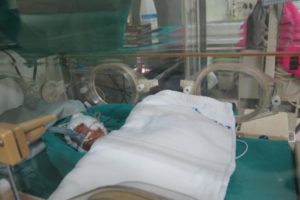
Seav Mey when she was only a few days old
When I met Khouch at Calmette Hospital in Phnom Penh, Cambodia, she was having labor pains at 26.5 gestational weeks. In my training as a doula, I have learnt how to support women to have easier births, but stopping a birth was outside the limits of my experience and knowledge. I did my best to comfort her with my eyes, words, touches, and massage. “You are not giving birth and even if you do, don’t worry because there is a NICU at this hospital.” The reply was as shocking as the whole experience itself: “I don’t have enough money.” I didn’t know then that Khouch was an orphan. Soon, her husband would hastily carry Khouch, as tiny and young as the mother was, in his arms to the delivery room, where two other women were giving birth at the same time. At one point I was asked to go out of the delivery room before I could explain my role there. And when I was allowed inside, Khouch’s husband with red eyes told me in his limited English: “baby not live.” As I turned my eyes to the tiniest baby I have ever seen in my life, all I could see was a huge heart beating, beating with strength, with ambition, with life…
Yet, the baby was left there in one corner, left to die…
I tried to talk to the midwives and nurses in vain, who were busy with other birthing women or with their smartphones. I could not understand what was going on until they walked me to the NICU where I could talk to a male doctor who spoke some French. “In Cambodia we don’t have the means to save a baby born 900 grams at 26 weeks gestation”, he said and added “they are young and there is no genetic problem, they can have another one”. I had no experience with premature babies. I didn’t have a clue what I was doing really, but some force in me pushed me to do something. I gave him the example of my brother-in-law, who was born 900 grams 44 years ago in Turkey.
“Even if she lives, she might have severe mental or physical disabilities,” he insisted. “Let’s give her a chance”, I insisted. Finally Seav Mey was accepted in the NICU, where the doctor believed she would die in a couple of hours and kept talking to me about funeral procedures. Tired and with hundreds of questions in my head, I went home, hugged my 5-year-old daughter and could not sleep with the thoughts of what if she stays handicapped, how will they pay the hospital fees, did I do the right thing or the wrong thing.
Then I shared this experience with friends in Turkey in social media. Next day my friends started sending money. The Australian teacher whom Khouch worked with started another fundraising in Australia. My doula friends informed me about Kangaroo Care. A NICU pediatrician in the best hospital of Istanbul provided me with necessary medical support. The breastfeeding counselors from the local Breastfeeding Support Group provided incredible support to help Khouch pump her milk. Now nine months have passed since that night where I followed my instincts and inner voice, responding to the call of the huge heart of Seav Mey. With the financial, emotional, and technical support we received from all around the world, and with the belief and love of her parents, now Seav Mey is a healthy baby, smiling to the world and making us smile with joy of solidarity and love.
I learned so much regarding the importance of skin-to-skin contact and the miracles a mother’s milk can do, especially for premature babies. Yet, the most important thing was my renewed belief and hope in solidarity regardless of race, color, religion, and borders.
Khouch has also expressed how the experience transformed her. If she had been asked before having Seav Mey, whether she was going to breastfeed, she probably would have shrugged her shoulders and responded “if I can, I will”. Now, when she looks back, her eyes fill with tears remembering her exhaustion, remembering holding Seav Mey in Kangaroo Care for days, weeks, months, but she also has a twinkle in her eye and renewed strength and belief in herself. “When I look back I think it is a miracle. How did I have the strength to do it? I don’t know how I did it for so many weeks and months but somehow I managed. I remember seeing Seav Mey crying when she was all alone in the NICU. But then when she was on me, when I was holding her, when she could feel me, hear me, and take from my milk, she never cried. That is when I knew that I had to continue… I was the one giving her strength. My body and my milk were giving her the love and nourishment she needed to keep going. Now I try to encourage everyone to breastfeed, to do what I did.”
Seav Mey turned one on the 13th of June. She is a happy, thriving, breastfed baby.
If you are interested in reading more about Kangaroo Care, we invite you to read this article: Kangaroo Care— why keeping baby close is better for everyone
Selen Göbelez, is originally from Turkey. After giving birth to her daughter five years ago, she became passionate about birth experiences and birth cultures and started working on a PhD Dissertation on “Birth Narratives of Women in Turkey”. Meanwhile she also became a birth and postpartum doula. Due to her husband’s job, she has lived in several countries, including Cambodia, where she had the chance to observe and participate in various childbirth practices. She breastfed her daughter for 20 months and strongly believes in the importance of support for women after birth as much as before and during birth.
Breastfeeding: How One Group Fought the Spread of Formula Milk in Refugee Camps
Nurture Project International
The head of Nurture Project International explains how refugee mothers in Greece are turning their camps into formula-free spaces When my Nurture Project International
colleagues and I first arrived at the Eko camp near Idomeni in Greece, it looked like Glastonbury – just a bunch of pup tents. The mothers had no privacy, there was no support for infant feeding, and independent volunteers were going tet to tent handing out bottles of formula. While they thought they were helping, it was dangerous. Women in a situation of poor security will take anything that is offered to them, so even breastfeeding women will take formula milk. Many women think formula is healthier than their own milk and will start feeding it to their babies. Volunteers bring formula but in reality mothers don’t need it.

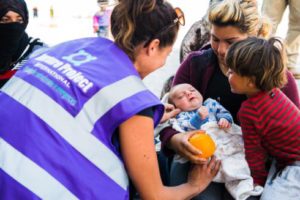
If you want to learn more about hw you can support breastfeeding mothers living in crisis please visit www.NurtureProjectInternational.org
Yes! Grandmas can Breastfeed!!!
Ines Avellana-Fernandez
Today at 64 years old, I am wet nursing a 2 month old baby, Ethan, enrolled in the Arugaan Creche (located in Manila, Philippines) for infants from 2 months up to 3 years of age. Arugaan in Filipino language means to nurture fully with lifetime commitment.
The Creche is open from 7 am to 7 pm from Monday thru Friday to support working families. It is a 12 hour non-stop service that nurtures infants and young children. The program’s curriculum covers three key areas of a child’s development: eating, learning, and playing.
Babies below 6 months old are wet nursed by the Arugaan staff— usually a teenage mom who is breastfeeding her own child. Her main role is to wet nurse an enrolled baby together with her biological child.
Why am I breastfeeding baby Ethan at the Arugaan Creche? It is because the wet nurse staff did not show up to work one day— she had to go home to the province to attend to her ailing mother. I took on the survival mode of letting baby Ethan breastfeed on me while I start spoon dripping his mother’s expressed breastmilk. I place the expressed breastmilk on a teaspoon and gently drip it on my breast for it to slowly roll onto my areola towards the nipple, while baby Ethan breastfeeds on me. On that day, I soon feel my breasts engorged with a tingling sensation as my body miraculously begins to produce milk. My energy calories in breastmilk is ever ready.
Arugaan, my mother support group organization, teaches lactation management and empowers women through breastfeeding. In 2012, WHO Philippines granted project funds for us to develop a training manual on Peer Counseling for the Department/Ministry of Health. We tested this training manual in 20 cities all over the Philippines with 6,000 Peer Counselors. In the course of one year of conducting two-day intensive training and one-day mentoring community-based practicum per city, we discovered—or shall we say, uncovered—19 Grandmas wet nursing their grandchildren. This, we discovered, when we carried out our Special Lactation Massage as part of the Peer Counseling training.
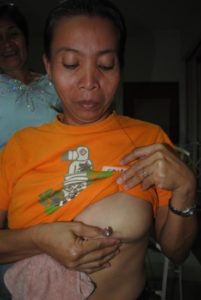
Sonia is a breastfeeding Grandma who supports her working daughter for a successful breastfeeding grandchild.
After the intensive Special Lactation Massage, which is first done with a buddy partner and then on oneself, a number of Grandmas were dripping with breastmilk, to the amazement of their co-Trainees. This aspect of the training correlated theory translated to reality: breastfeeding is a miracle, not magic, and has no age barrier when it bespeaks of the power of lactation to rear a child.
The eldest child we were able to recapture back to breastfeeding for the first time was 2 ½ years old Jigjig, whose mom had just given birth. It took seven days for the toddler to be on full breastfeeding in tandem with his baby sister Honey. Their breastfeeding journey lasted till Jigjig was 4 years old.
Thus, it is natural for us to practice what we preach. The 27 of us are now the Hot Lola/Grandma Club.
Our latest converted Grandma was a 56 years old. She attended my Eat Right seminar for babies’ first solid food or complementary feeding. Both mother and grandmother worried how to continue breastfeeding the baby when the mom will be away in another country for meetings. I shared my story:
In 2015, I wet nursed a one year old baby girl. She was the daughter of my house helper. My daughter-in-law had a three week meeting in USA and she was breastfeeding her six month old baby, my grandson. I sent a wet nurse caregiver in the daytime, and I sent my helper as a wet nurse caregiver for the night shifts. From 6 pm till 6 am, my helper was away caring for my grandson and didn’t arrive back until 8 am. During that span of time I wet nursed her baby, especially in the evenings. I wet nursed her for almost two months. We jokingly said, “my Nanny has a Nanny and it is me”.
Another Arugaan member of the Hot Lola/Grandma Club was Mitas, who wet nursed her grandson in support of her working daughter to avert stress at workplace. So that her daughter will not be anxious about low output of expressed breast milk while at work, Grandma Mitas had a year of her breastfeeding journey with her grandson. We can testify as witnesses that Mitas was rejuvenated in both looks and body, and her breasts are firmer. She became ten years younger because of the enormous power of stem cell and glutathione that breastmilk and the act of breastfeeding provides.
I wet nursed for two months and looked five years beautifully younger. Besides, breastfeeding brings peace and love, confounded by the breastfeeding hormone oxytocin that relaxes mind, body, and spirit. The prolactin hormone that makes the breastmilk is ever ready 100% to be released as our mind commands it. Breastfeeding is 90% psychological. For us ardent believers of breastfeeding power, we are ready anytime, anywhere when emergency beckons to save a child.
Grandmas unite for breastfeeding our grandchildren or any babies in urgent need!
Ines Avellana-Fernandez is a groovy Grandma who wet nursed a one year old and now a 2 month old baby. Ines is a Breastfeeding Babaylan – nurturer, healer and leader, An Ashoka Fellow awardee 2015. Ines was recently a speaker at the 2016 Philippine Pediatric Society’s 2nd International Breastfeeding Conference with her Topic: “Approaches to Relactation with Special Lactation Massage Intervention”.
Breastfeeding Support: The Role of a Grandfather
Christopher Smith
I wonder whether the average breastfeeding mother would put her father in a list of people who supported her during her breastfeeding journey. So when I was asked to write this article I was somewhat bemused. Did I really support my daughters during their breastfeeding years? And if so, what did this support consist of?
On further reflection, I came to the conclusion that perhaps my most important contribution consisted in maintaining a positive attitude towards breastfeeding. In this I was lucky in that my wife was an active participant in La Leche League, so I learned a great deal from her about the significant benefits of breastfeeding. I also read a great deal about breastfeeding in the plentiful literature that exists, discovering in the process that there has been much scientific research done on the short, medium and long term advantages of breastfeeding. All these influences enabled me to react positively towards my daughters’ decisions to continue breastfeeding until my grandchildren weaned themselves, as well as their practice of demand feeding, co-sleeping and all the other elements of a natural and successful breastfeeding experience.
Flowing from this acquired knowledge on my part comes another contribution: being able to shield my daughters from overt or implied criticism about their breastfeeding by using my knowledge as a strong deterrent whenever negative comments are voiced by family, friends, or strangers. Many mothers are overly sensitive about receiving questions or criticism about their breastfeeding, so being able to counter these negative remarks by well-founded counter-arguments undoubtedly helps to maintain a positive environment around the mother-child unit.
I have not mentioned some of the more obvious ways you can help your breastfeeding daughters, such as entertaining her other children so that she can get some much needed rest even while she is attending to the baby, or rocking the baby to sleep in your arms (with all the appropriate singing and cooing!) while the mother deals with the older one or ones. These are the normal joys of grandparenting. But it all comes down to creating a positive and protective ambience around your daughter that will undoubtedly help her in this all important journey on which she has embarked.
So there you have it all you grandfathers out there. Even though you are unlikely to be asked by your daughters to advise on latching on, or cracked nipples, or all the other practical aspects of breastfeeding, if you have read the literature and can maintain an encouraging and positive attitude towards breastfeeding, you will undoubtedly help your daughters to achieve a happy and successful breastfeeding experience. And your reward for this effort? Happy, healthy, and loving grandchildren that will fill your later years with some of the most pleasurable times of your life.
Christopher Smith is a father of four and a grandfather of 7. Originally from Santiago, Chile, he has lived in Mexico City for more than 40 years running a cosmetic and perfumery company. He is now semi-retired and enjoys spending time with his wife, children, grandchildren, reading, and traveling.
Becoming a Father in Cambodia
Alex Hales
I have lived in the beautiful country of Cambodia for over 11 years, in that time I have managed to stay fit and healthy, avoid dangerous activities, and eat well, so apart for a lack of exercising I am pretty good shape at 46 years. Up till recently I had no need to concern myself with matters that involved medicine at all. This changed the day my wife and I decided to have a baby and we learned a horrible truth that conceiving naturally would be out of the question for us.
As you can imagine my wife and I were quite upset by the news, and after the initial shock we decided that we should seek help. A friend informed us about a good fertility clinic in Phnom Penh that had been getting some great results for couples and we went along for a consultation. Now Cambodia is not renowned for first class medical treatment and in truth there are still many places that cater for a more rudimentary service and treatment. However, the clinic we visited changed our perception, well-educated English speaking staff, clean modern interior and consultants who understood that patients needed more than treatment, they need emotional and physical support.
After doing the appropriate test and receiving the treatment we discovered that we had caught first time and we would be having a baby girl. Naturally we were delighted to hear the news and this is when it sunk in that I would soon become a father.
I learned very early on how emotional pregnancy can make a woman, witnessing the mood swings and anxiety that goes with being pregnant. I also learned that my wife could not find out enough information on what to expect both pre and post-delivery. Youtube helped a lot with friendly video’s from experts giving out advice, making suggestions on how to cope both physically and mentally. However there was considerably less information for expectant fathers.
I love my wife dearly and now we have had our daughter, who seems to change and grow every moment. I am in awe of the work and effort that my wife puts in to nurture our baby, getting up at night to breastfeed 2 or 3 times, trying not to wake me so I am not tired in the morning. As a dad, you can feel a little useless, even inadequate: it’s all about the mother and baby. As a professional coach, I tell people that you are responsible for what happens in your life, so I was determined to make sure I did my fair share.
My wife, the ever-focused expectant mother, trawled through social media and learned of a breastfeeding support group that met in Phnom Penh every 2 weeks. We only attended the group once but it was a great opportunity to speak with helpful new mothers who had just gone through giving birth. Books and internet are OK but there is no substitute for talking with someone who has just gone through the experience and has fresh memories about what to expect and what to do when it happens. Skin-to-skin to calm and keep the baby warm, not washing the baby so familiar smells on the baby’s hands and mummy’s breast will help the baby crawl to the breast and latch on for that first drink of colostrum.
As an English man, I had grown up in a world where women’s bodies were objectified, with the breast being an appendage for male pleasure and sexuality. If I am honest with myself it was how I saw women. I guess my lack of exposure to the real reason for breasts had made it alright to think this way; after all, all my friends thought the same. So, I am ashamed to admit it, but I was looking at things in the wrong way and I was also afraid that if my wife was to breastfeed in public, other men might think the same as I and some may lust over her.
Despite this, my wife and I had spoken long and hard, about the need for breastfeeding, by attending the breastfeeding group, observing how natural and comfortable all the mothers were, when they fed their child, it helped me understand. By just getting to experience this very natural and loving act, it created a kind of paradigm shift in the way I saw things and now understand the real reason for the way things are.
Because of this simple meeting and having the chance to talk to the mothers, it has given me the confidence that I needed to be totally committed with my support for my wife to feed my baby any place she should choose. I would honestly encourage any expectant dad to take the time to join a group like this and educate yourself by getting the exposure you need to see that breastfeeding is the most natural and wonderful experience for a mother.
My daughter is only 6 weeks as of writing this story and each day I fall in love just a little bit more. I could not be more proud of my wife and I am not sure how I can ever put into words just how much I love and admire what she has done for me. My mother passed away just a few months before my daughter arrived, I named my baby after her— Pauline. I won’t get the chance to look into her pail blue eyes and tell her how I have learned in such a short space of time and say thank you to her for giving me all she did.
Guys, you love your wives so take the time to join one of these groups, to experience the support and discovery, you’ll be glad you did.
Alex Hales, People Development Consultant, traveled the world before he decided to make Cambodia his home in 2006. He is now based out of Phnom Penh, providing support to companies looking to grow their human resource, develop internal corporate structure, and improve business operations. Happily settled down and married to his wife of 5 years Moniroath, their lives have been blessed with the recent arrival of their baby girl— Pauline Moly.
Breastfeeding Welcome Here: Taking the lead in creating safe public spaces for the breastfeeding mother
Breastfeeding Friendly Quinte is an inspiring Initiative that is working to normalize breastfeeding by positively highlighting breastfeeding friendly businesses in the Quinte area, based out of Belleville, Ontario, Canada.
Unfortunately, there is very little support for the breastfeeding mother in the area of Quinte (a small community of approximately 50,000 people located on Lake Ontario, Canada). The local hospital has no formal support programs in place and does not require its staff have formal education in lactation, lacking even a lactation consultant on staff. What most mothers do not know is that the staff who are experts in helping women safely deliver babies are not experts in breastfeeding. This includes doctors, who are usually the first people parents will ask for help. For mothers who do manage to successfully breastfeed, despite the limitations, it is especially hard to breastfeed in public when little knowledge exists among the general public of the importance to create a breastfeeding continuum of support in all aspects of a mother’s life. Megan Irvine, Campaign Director of Breastfeeding Friendly Quinte, is acutely aware of these difficulties, being a mother herself. “Breastfeeding is difficult to begin with in this community— so adding the pressure of breastfeeding in public is something I wanted to change. Our accomplishments have been small in nature but large in many women’s lives. We have had great response from our local libraries, health unit, and other businesses that are crucial in a new mother’s life. If we can change the way just one mother feels while nourishing her child in public, than all the work we have done has been worth it.”
The Initiative is run by a small group of volunteers, giving of their time to reach out to businesses to provide information on the importance of supporting breastfeeding and the role they can play in this. Their goal is to positively highlight businesses that want to join in to the movement of normalizing breastfeeding. They strongly believe in creating a movement that is inspirational in nature, thereby compelling businesses and public spaces to feel motivated and understand the importance of creating an environment of support for breastfeeding families.
For a business to be labelled as breastfeeding-friendly, they must educate their staff on a mother’s right to breastfeed in public and commit to the following:
- to place the Initiative sticker “Breastfeeding Welcome Here” in the front entrance of the business, either on the window or door (it must be clearly visible to entering customers)
- to visibly display to staff a poster provided by the Initiative that explains the Ontario Human Rights Code, which protects all breastfeeding mothers from feeding their children anywhere and anytime
- to place provided business cards in designated area (if applicable)
- to take a photo of the sticker and post on social media sites with provided hashtag (if applicable)
Participating businesses receive promotional posts on the Breastfeeding Friendly Quinte social media outlets. Currently, 40 businesses are participating in the campaign. These include financial offices, doctors’ offices, public spaces, chair restaurants and locally owned businesses.
In the future, the Initiative is looking to collaborate with the local health unit to provide businesses with a Breastfeeding Support Package. These packages will educate business owners on not only their customer’s rights but also their employee’s rights in the workplace. These packages will also help business owners to have the tools and information on how to educate their staff. This is particularly important when it comes to normalizing breastfeeding, as ultimately they are the ones who come in contact with breastfeeding mothers (and also one day may be mothers themselves).
Megan strongly believes that mobilizing communities and creating partnerships is key in establishing an environment of support for the breastfeeding mother. “Breastfeeding starts in pregnancy and communities need to start better educating our women at this point. Hospitals need to start implementing baby friendly policies that require all staff to receive additional education in lactation. Our physicians, dentists, and pharmacists need to receive additional education in lactation. If all of our health care professionals worked together with the same goal in mind— we would see a far better success rate”.
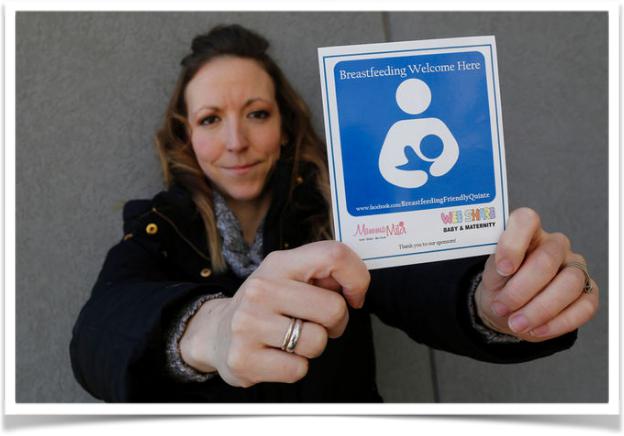
Megan Irvine, Campaign Director of Breastfeeding Friendly Quinte, holding the stickers that are given to businesses to display their support for breastfeeding.
For more information on this exciting Initiative, please visit their Facebook page.
Megan Irvine was born and raised in the Quinte area. She is a wife and mother of three (a 3 year old, a 2 year old, and a new born). She has been consistently breastfeeding since the birth of her first daughter and continued to nurse through both her pregnancies. She has experience tandem nursing and breastfeeding toddlers, both of which she has done in public on several occasions. She currently owns and operates a cloth diaper service out of her home. She established this business after the birth of her first daughter with the desire to be home with her children and to also have time to give back to their community. Breastfeeding Friendly Quinte is one of the ways she has been able to achieve this.
READ what other Changemakers are doing to promote breastfeeding in their community
- Strong families build strong businesses by Patagonia (USA)
- Finding breastfeeding support: From airports to football stadiums by the National Institute for Children’s Health Quality (USA)
- Community grandmothers keep breastfeeding traditions alive by W.K. Kellogg Foundation (USA)
Mother Support, Kalpana (USA)
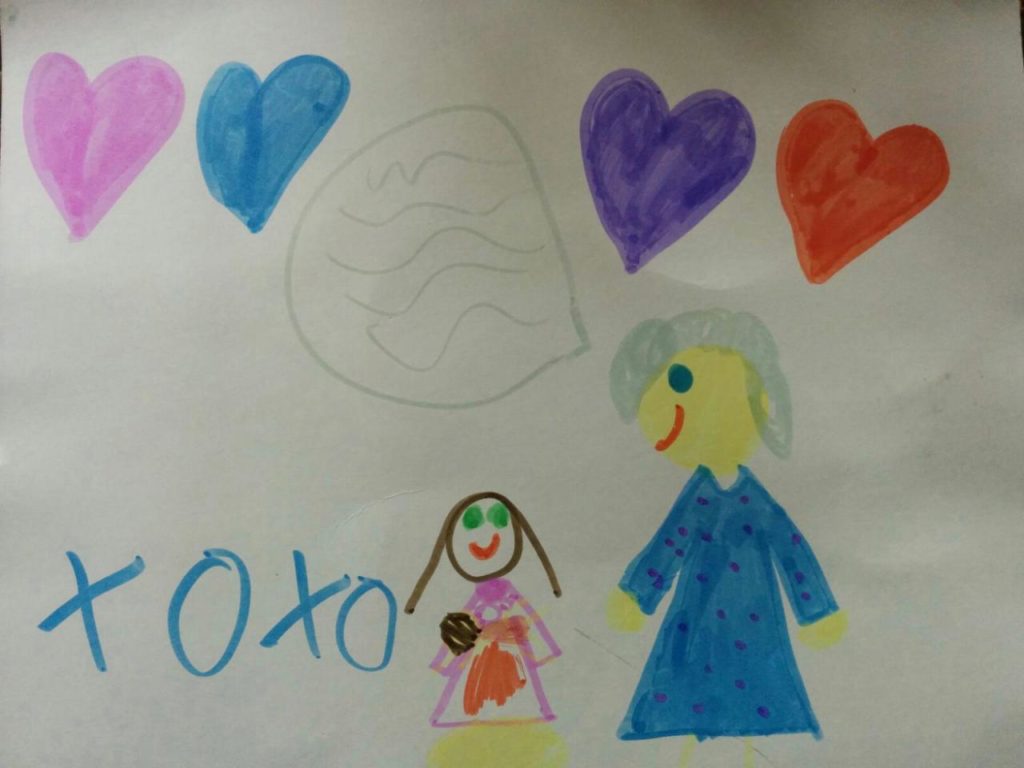
Breastfeeding support in the eyes of Kalpana, a 6 year old girl living in the USA: “You can see the baby in my arms and Mummy is telling me that I am doing a good job”. March 2017
Breastfeeding is a Part of Playtime
Breastfeeding and animals are my three-year-old daughter Lucia’s two favorite things. She loves to separate her animals and categorize them between those who breastfeed and those who do not. Her favorite are the gorillas. She takes three and says “Mummy, Daddy, and Lucia” and she puts “Lucia snuggling with Mummy as she breastfeeds, and Daddy next to us”. Also, when she makes one of her puzzles— Lucia is the squirrel that drinks milk from Mama Bear, and Dad is the owl that snuggles next to us.
Lucia lives with her Mom and Dad in Phnom Penh, Cambodia
Humans are Mammals too
Katherine’s kindergarten teacher pulled her mother aside to tell her a story. The kids were given the assignment to draw an animal and give one fact that they knew about that animal. The teacher said that Katherine’s was her favorite. When it was Katherine’s turn, the animal that she had drawn was a human, and her “fact” was that humans are mammals because they make milk for their babies. Some of the other kids said that humans aren’t animals Katherine said, “Yes, they are, because they give their babies milk from their bodies.” She pointed to some of the other kids’ pictures and explained, “Bears are mammals because they make milk for their babies, and cats are mammals, too, because they make milk for their babies.” The teacher had nursed her own now-grown children and was delighted with this little learning event.
Breastfeeding Advocates – Translators!
Rebecca Magalhaes and Pushpa Panadam
Many of us have been in a meeting, workshop, or conference attended by people who spoke different languages and thus, the organizers needed to include translators! How wonderful it is to be able to listen to the knowledge of a well-known speaker, even when that person doesn’t speak our language! We are also grateful to the translators who work to translate books and other publications. Translators are beautiful people.
Thanks to WABA, the beauty of this Newsletter has always been that many mothers, fathers, breastfeeding advocates, health professionals, and anyone interested in breastfeeding and specifically in mother support, have been able to read it in 4 major languages: English, French, Spanish, and Portuguese.
The WABA Secretariat, Pushpa, Rebecca, Natalia, and Melissa would like to celebrate the persons who have made it possible for subscribers to read the Newsletter in one (or more) of these 4 languages. Some have been with the Newsletter from the beginning; some have been with a specific language from the first issue it was used; others have worked with the Newsletter for the time they could. Some of their names are: Spanish – Maria (Pili) Peña, Pushpa Panadam, Marta Trejos; French – Anna Cook, Katharine Greathead, Juanita Jauer Steichen, Stephanie Fischer, Herrade Hemmerdinger. Portuguese -Pajuçara Marroquim, Analy Uriarte. Grateful to all the translators, we would like to feature those who are currently working with the Newsletter.
Pajuçara Marroquim, Brazilian LLL Leader (20+ years), who lives in Maceió, Alagoas, Brazil, has been a faithful translator since the first Portuguese issue was introduced in 2005 (Vol 3, No.4), initially working with Analy Uriarte, but being the sole translator since 2013. Pajuçara has 3 adult daughters (2 married), 1 breastfed grandson. She attended the first meeting of the LLL Maceió Group in 1979, continuing to attend and support the Group, help with the LLL Portuguese Newsletter (BoLLLetim Informativo), and then facilitate the Group and produce the newsletter for many years. Retired from the Federal University of Alagoas (UFAL), she taught Nutrition, introducing breastfeeding into the curriculum and oversaw 2 expansions and reprints of the book “Amamentar. Por Que Não?”(Breastfeeding: Why Not?), a LLL Maceió publication. Thank you, Pajuçara!
Herrade Hemmerdinger, French LLL Leader for 12 years, co-translated with Juanita on Vol. 3 – Vol. 7, took a break and rejoined the Translators Team for Vol. 14 and continues to work as the sole translator for the French newsletter. Wife to Henri and mother of 3 breastfed daughters (Laura, Victoria, and Volodia), Herrade is also a qualified Doula and a great cook. She shared her experience of Volodia’s birth in Vol. 13. (http://www.waba.org.my/pdf/mstfnl_v13n1_eng.pdf. Herrade co-leads two mother support groups per month in Montpellier, France. Thank you, Herrade!
Marta Trejos, Costa Rica, has been translating the Spanish version of the Newsletter since Vol. 8, taking over from Maria Peña, who worked on the newsletter from Vol.1 to Vol.7. Marta is mother to Cristina and Fausto and grandmother to four breastfed grandchildren. She is the director of CEFEMINA (Centro Feminista de Información y Acción), a women’s information and action center, founded in San José, Costa Rica. Marta was featured as a Breastfeeding Advocate in Vol. 7 No.1. See http://www.waba.org.my/pdf/mstfnl_V7N1d_eng.pdf. She is also the Regional Director of IBFAN LAC (International Baby Food Action Network Latin America and the Caribbean). IBFAN LAC networks with other breastfeeding organizations to provide information and support to strengthen breastfeeding laws and their implementation in the region and support breastfeeding. Thank you, Marta!
Stay Current: Research, happenings and resources
Research
- Supporting breast-feeding women from the perspective of the midwife: A systematic review of the literature Midwifery, June 2016
- Effectiveness of Baby-friendly community health services on exclusive breastfeeding and maternal satisfaction: a pragmatic trail Maternal & Child Nutrition, July 2016
- Impacts on breastfeeding practices of at-scale strategies that combine intensive interpersonal counseling, mass media, and community mobilization: Results of cluster-randomized program evaluations in Bangladesh and Viet Nam PLOS Medicine, October 2016
- Determinants of exclusive breastfeeding practice to infants aged less than six months in Offa district, Southern Ethiopia: a cross-sectional study International Breastfeeding Journal, December 2016
- Assessment of knowledge and practices about breastfeeding and weaning among working and non-working mothers Journal of Pakistan Medical Association, March 2017
- Prevalence of early initiation of breastfeeding and determinants of delayed initiation of breastfeeding: secondary analysis of the WHO Global Survey Scientific Reports, March 2017
Happenings
- Midwifery Today Conference— Trust, Intimacy and Love: The Chemistry of Connection, October 4 – 8, 2017 in Helsinki, Finland.
- Academy of Breastfeeding Medicine 22nd Annual International Meeting, November 9 – 12, 2017 in Atlanta, USA.
- Healthy Children’s Center for Breastfeeding: International Breastfeeding Conference, January 9 – 12, 2018 in Florida, USA.
Resources
- From the first hour of life: A new report on infant and young child feeding. UNICEF (October 2016)
- Breastfeeding a matter of human rights, say UN experts, urging action on formula milk. UN Human Rights (November 22, 2016)
- The Importance of Dads and Grandmas to the Breastfeeding Mother: US Version by Wendy Jones (November 30, 2016)
- The Big Letdown: How Medicine, Big Business, and Feminism Undermine Breastfeeding by Kimberly Seals (January 24, 2017)
This newsletter is published twice a year in English, Spanish, French and Portuguese.
To subscribe or for submitting your submissions please email gims_gifs@yahoo.com
